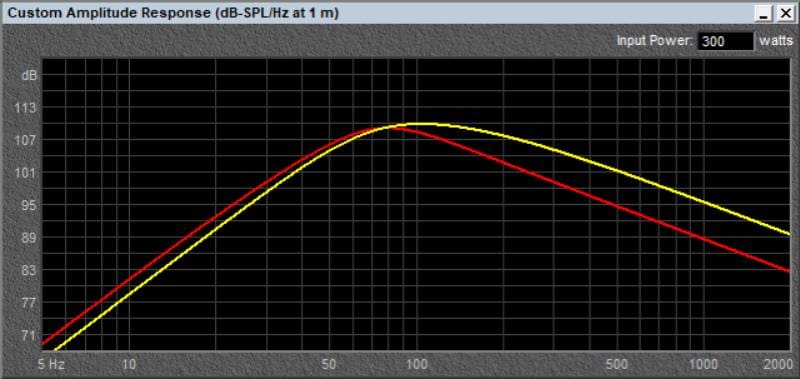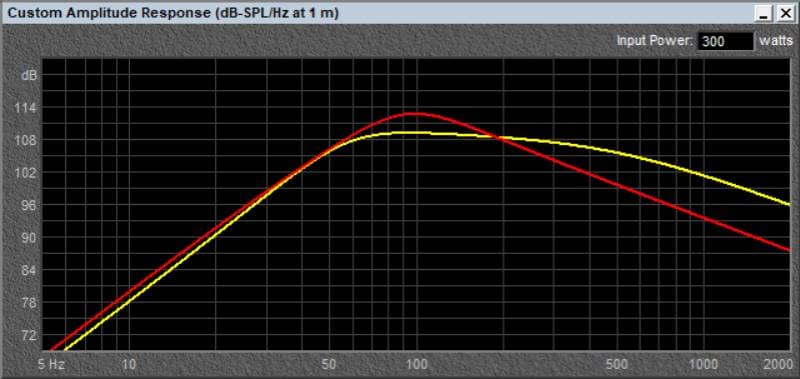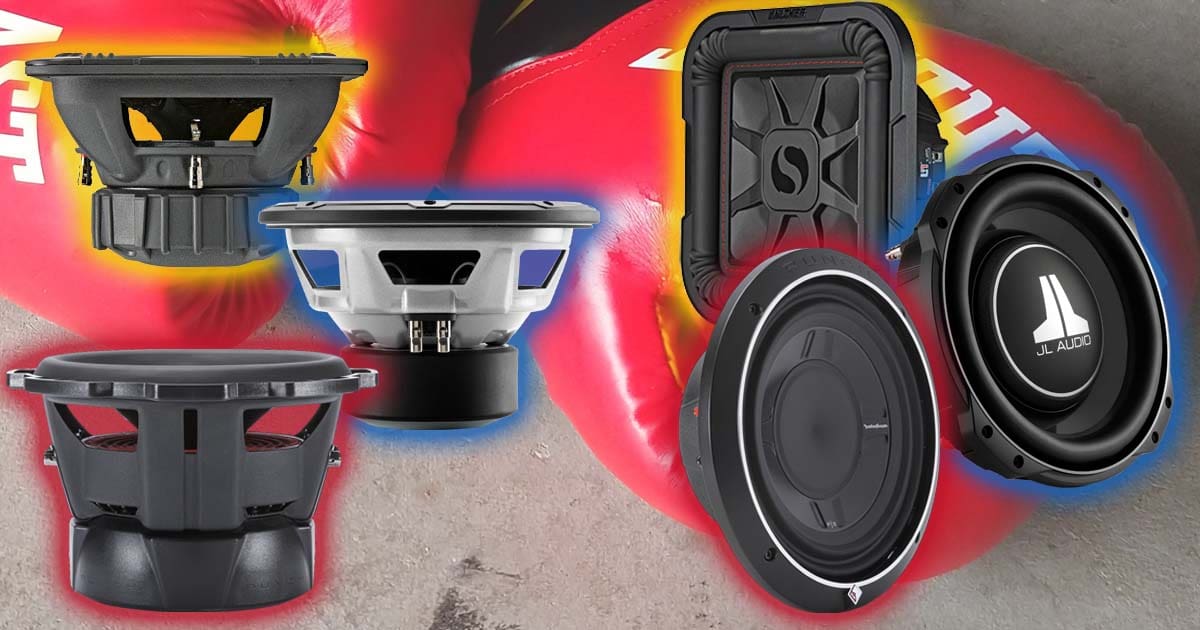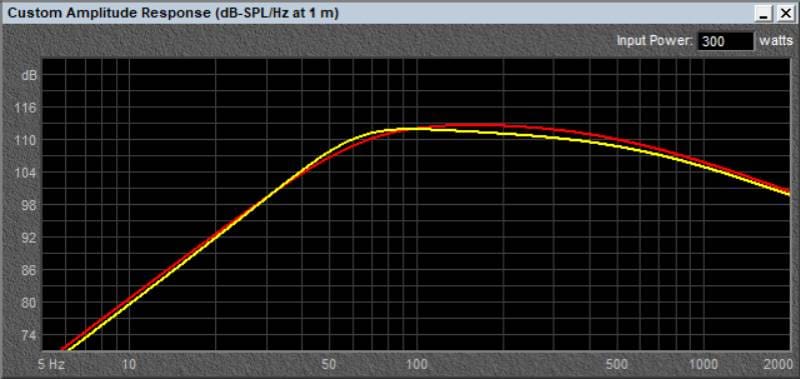There seems to be some misunderstanding about the relationship between subwoofer mounting depth requirements and performance relative to enclosure volume. We constantly see enthusiasts talk about having a 10-inch shallow sub mounted under a car or truck seat. Their expectation is full-size subwoofer performance without the need for a large enclosure. Let’s do a few simulations to see if they have any hope of getting the bass they want.
What Is ‘Great Bass’?
In our opinion, the purpose of a subwoofer is to extend the low-frequency output of an audio system such that the entire audio spectrum is covered. Unless they are massive (which causes other problems), the speakers in your doors or dash won’t play much below 50 Hz at high volume levels. The addition of a dedicated subwoofer with a dedicated amplifier can easily play to 20 or 25 Hz and relieves the smaller speakers of the task of playing these frequencies. As a result, the smaller speakers will sound better, and the subwoofer will give you the impact you expect from your audio system.
When quantifying bass performance, we talk about output capability and extension. Quantifying these characteristics is tricky, as the numbers depend on the vehicle into which the products are installed. Instead, we’ll use simulations from the BassBox Pro software to give you an idea of how different subwoofers perform in compact enclosure volumes. While not absolute in terms of in-car performance, the relative differences will be demonstrated clearly.
Sample 1 – Rockford Fosgate Subwoofers
Rockford Fosgate has dozens of differently sized subwoofers in their product line. Their solutions range from affordable entry-level products in the Prime Series to competition-grade Superwoofers in the Power Series. For this comparison, let’s look at a Punch P3 shallow 10-inch subwoofer and compare it to a full-depth version at the same feature level. The two subs will be the shallow-mount P3SD2-10 and the full-depth P3D2-10.
Because space is usually at a premium for shallow subwoofer installations, let’s take a look at how each of these subwoofers performs in a compact sealed enclosure with a net internal volume of 0.5 cubic foot. If you want to picture that enclosure, it might have a width of 13.5 inches, a depth of 5 inches and will need to be 22 inches long if constructed from ¾-inch-thick material (as it should be).

It would be easy to think that the shallow sub plays louder, as the peak output is 109.7 dB at 106.7 Hz compared to 109 dB at 75 Hz for the big driver. However, in almost every application, your subwoofers will be used with a low-pass filter that’s set somewhere around 60-70 Hz. As such, it’s the system efficiency below 70 Hz that will determine how much bass the sub produces for a given power level.
The P3D2-10 simulation predicts 103.2 dB of output at 40 Hz and 101.8 dB from the shallow sub at the same depth. In this case, the big woofer will be louder for a given enclosure size.
Sample 2 – JL Audio Subwoofers
Another company with a great selection of full-depth and shallow subwoofers is JL Audio. Let’s look at the big 10W3v3-4 to the shallow 10TW4-D8 driver. The big sub needs at least 5.93 inches of mounting depth, while the shallow TW3 driver requires only 3.25 inches. Let’s look at both of these drivers in a half-cubic-foot enclosure and see which is louder.

Here we see that both subwoofers are very similar below our crossover frequency. The big W3 sub is producing 102.9 dB at 40 Hz, and the shallow TW3 driver offers 102.6. In our opinion, that’s pretty much the same.
Sample 3 – Kicker Subwoofers
Let’s run these calculations one more time with a pair of Kicker subwoofers. This time, we’ll compare the 10-inch square dual-4-ohm L7R sub to its shallow-mount L7T brother. Both drivers are rated for 500 watts maximum power handling. The L7R requires 6.125 inches of mounting depth, while the L7T needs only 3.75 inches.
Just as with the JL subwoofers, the output of the shallow subwoofer is very similar to that of the big sub when driven with 300 watts of power. The L7R’s predicted output is 103.7 dB at 40 Hz, with the thinner L7T is calculated to produce 104.3 dB. You might be able to hear the difference, but not likely.
Are Shallow Subs the Same as Deep Subwoofers?
As one of our readers asked on Facebook, “So, the benefit is only shallow mounting depth, not a change in enclosure requirements?” He is right. The physics that govern output and low-frequency extension don’t change with a shallow subwoofer. Their benefit is minimized mounting depth, not magical deep-bass from microscopic enclosures. Your installer can create unique low-profile enclosures with a shallow sub, letting them mount them in spaces where a full-size sub doesn’t fit.
One thing to keep in mind is that shallow subwoofers may not have as much cone excursion capability as their full-sized brethren. The Kicker L7R has an Xmax spec of 13.9 millimeters, where the L7R is only 9.2 mm. The full-depth Rockford Fosgate P3D2-10 has an Xmax of 15.2 millimeters versus 8.4 mm for the shallow P3SD2-10. The chosen JL Audio subwoofers are the exception here. The TW3 has a rated Xmax of 15.2 millimeters, where the W3v3 sub is 14.0 mm. Both are good numbers, so it’s not a concern.
Do Shallow Subs Work in Small Enclosure?
The answer to this is that every subwoofer needs a certain amount of air volume behind the cone to perform. Subwoofers with shallow designs don’t produce more deep bass from a small enclosure. We’ve heard both deep and shallow subs in 0.2- and 0.3-cubic-foot enclosures. They sound terrible. Our take-away from this series of simulations is a recommendation to resist asking the local specialist mobile retailer you are working with to design and fabricate an enclosure that doesn’t provide the subwoofers you’ve chosen with adequate space. You’ll likely find that you’ll get more deep bass by using fewer subs in a properly designed system.


